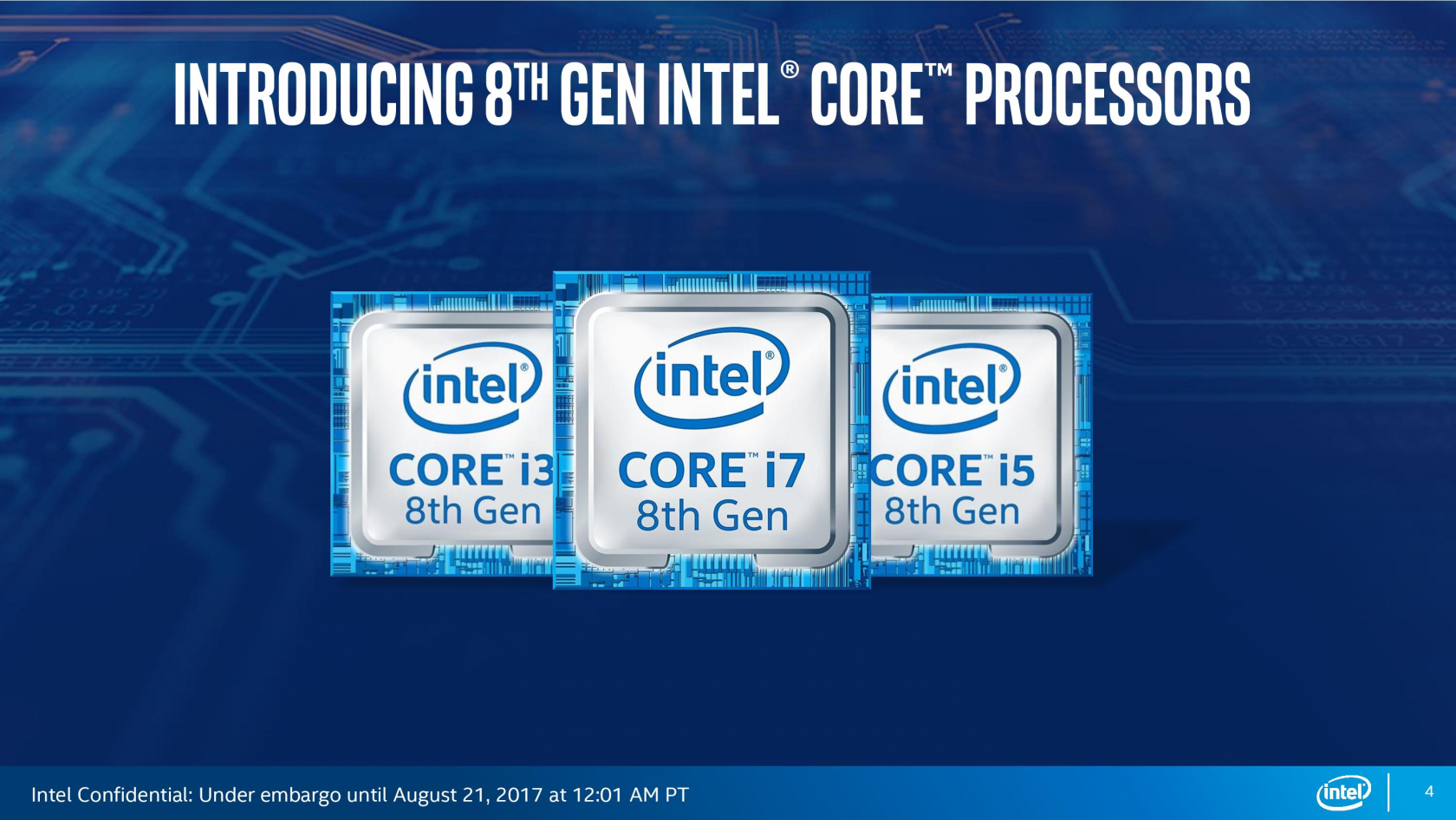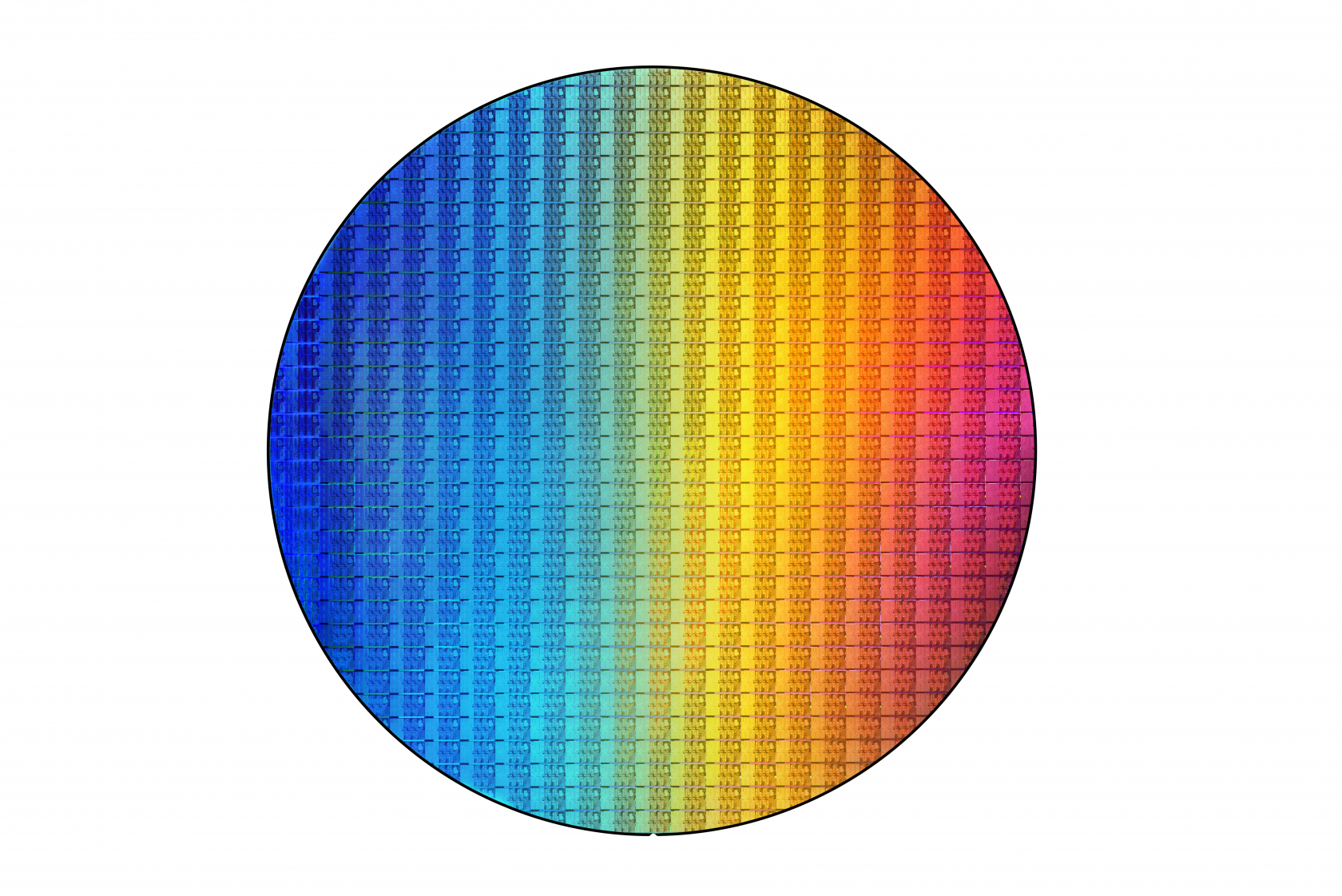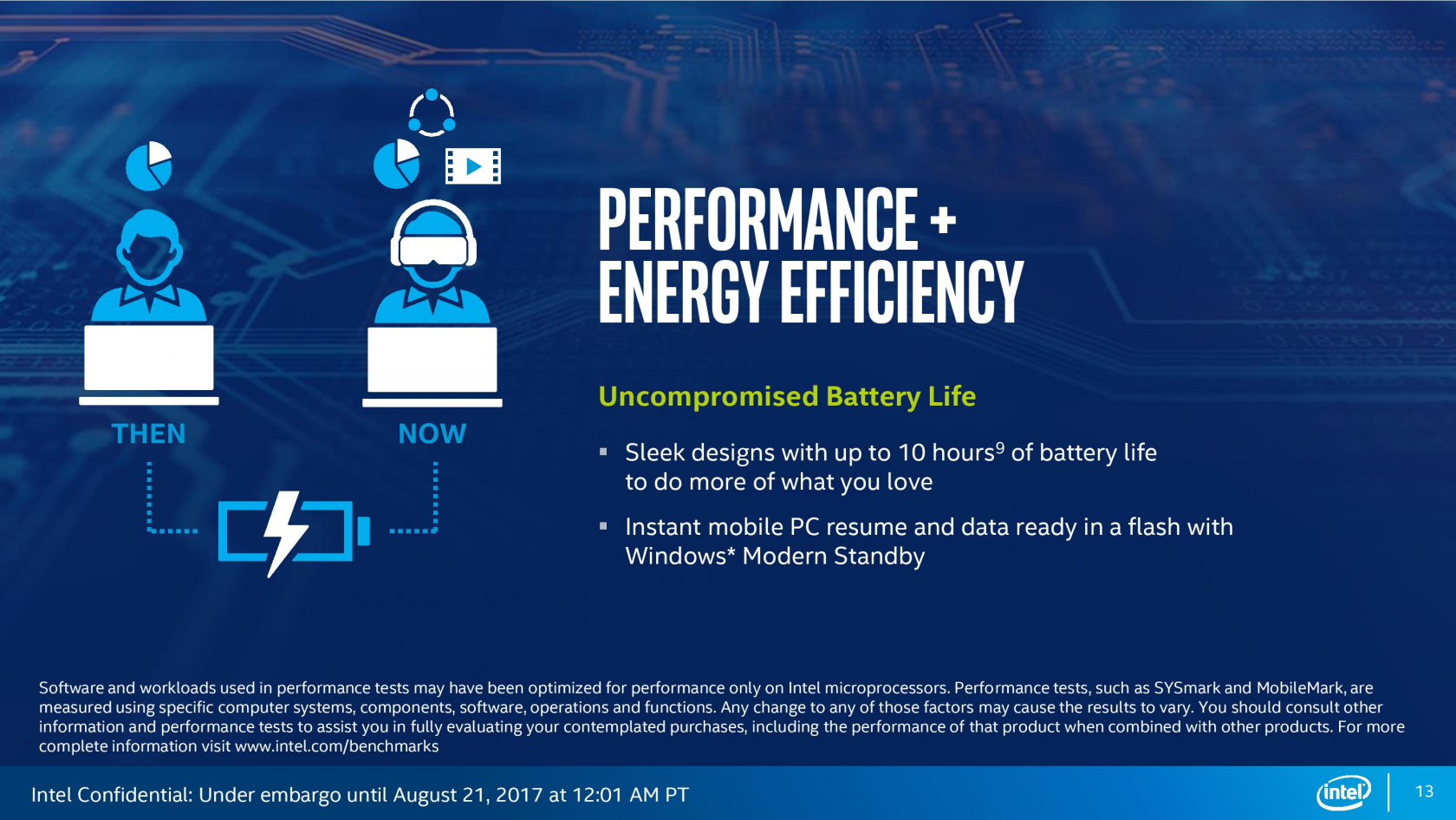Four Cores for Ultrabooks: Core i7-8550U Review > The Largest Boost to Ultraportable's Performance in Quite Some Time
The Largest Boost to Ultraportable's Performance in Quite Some Fourth dimension
After years of minor performance iterations twelvemonth after twelvemonth, Intel has gone Bang in 2022 with the release of Kaby Lake-R. Information technology's kind of strange, because Kaby Lake Refresh is non a significant architectural upgrade from Kaby Lake (in fact, at that place are barely any differences), nevertheless these refreshed CPUs accident away Intel'south seventh generation low-power ultraportable processors.
The pregnant gain in functioning between Kaby Lake and Kaby Lake-R U-series parts, with a 15W TDP, is all down to two factors: double the amount of cores and threads, forth with higher boost frequencies. It's remarkable that Intel has been able to brand this upgrade without harnessing a new process node or architecture, only I'm glad they accept.
The outcome is the largest year-on-year improvement to ultraportable CPU performance in quite some time.

Despite the aforementioned TDP between the Core i7-8550U we looked at here and last year's Core i7-7500U, at that place are times when the 8550U fully utilizes the additional two cores at the maximum boost frequency to provide more than than double the operation. This sort of performance may only be experienced with relatively brusque workloads, only it's impressive all the same, especially as many laptop-typical loads are brusk in elapsing. If these loads utilize all four cores, look to see huge improvements.
While you won't see equally good performance across the lath, the gain from Kaby Lake to Kaby Lake-R is still enormous in multi-threaded situations. Video rendering was 40 to fifty per centum faster, while MATLAB simulations were thirty percent faster. Fifty-fifty physics workloads in 3D games do good from the additional CPU horsepower, to the melody of 50 percent in 3DMark Time Spy.
Beyond every workload, on average nosotros saw the i7-8850U outperform the i7-7500U by 49 pct. That's huge.

Single-threaded functioning gains are naturally a lot lower, and dominated by Kaby Lake-R's higher Turbo frequencies for single-core loads. We saw gains typically around the ten to 15 pct marker, though this tin can be as loftier as 30 pct, which is nothing to snuff at for a generational upgrade. Even so, most of the performance gains exercise come in multi-threaded workloads, which are reasonably arable in 2022.
These CPU speed gains let the i7-8550U to come up remarkably shut to the performance of the 45W i7-7700HQ, although the 7700HQ does still hold a respectable reward in sustained workloads. Previously, the 7700HQ was more than twice as fast every bit Intel'due south U-series parts; at present, the gap is more like 30 to 40 percent.
If you're upgrading from an older laptop with a 5th-generation Cadre i7 Broadwell processor, for case, you tin can expect to encounter gains in the order of 70 percent during multi-threaded workloads, and potentially upward to double the performance if you lot're upgrading from a Core i5.

One thing nosotros oasis't discussed in this review is ability consumption. This is fairly catchy to evaluate on a laptop platform, as battery sizes vary significantly between each production. Yet, our experience using the Dell Inspiron 13 7000 2-in-i has been very solid in a general sense, despite the laptop only having a 38 Wh battery (smaller than average for an ultraportable). At the very least, it seems that Kaby Lake-R battery life is no worse than Kaby Lake for this type of configuration, despite the increased operation.
Equally we review a range of Kaby Lake-R laptops in the coming months, how the new line of processors stacks up in terms of efficiency will be revealed.
For now, what we can say is that Kaby Lake-R and the Core i7-8550U provides a huge improvement in performance over its predecessors. If you lot were belongings off buying a new laptop because performance gains in the last few generations accept been disappointing, at present might be the time to make a move.
Pros: Big functioning gains to be had, specially on multi-core loads. Going from two to four cores in the same form factor is significant, and that's why Intel's eightth generation mobile processors are the about impressive in a long fourth dimension.
Cons: Non a significant architectural upgrade from Kaby Lake.
Source: https://www.techspot.com/review/1500-intel-8th-gen-core-quad-core-ultrabooks/page7.html
Posted by: dobbinsladmoultan.blogspot.com


0 Response to "Four Cores for Ultrabooks: Core i7-8550U Review > The Largest Boost to Ultraportable's Performance in Quite Some Time"
Post a Comment